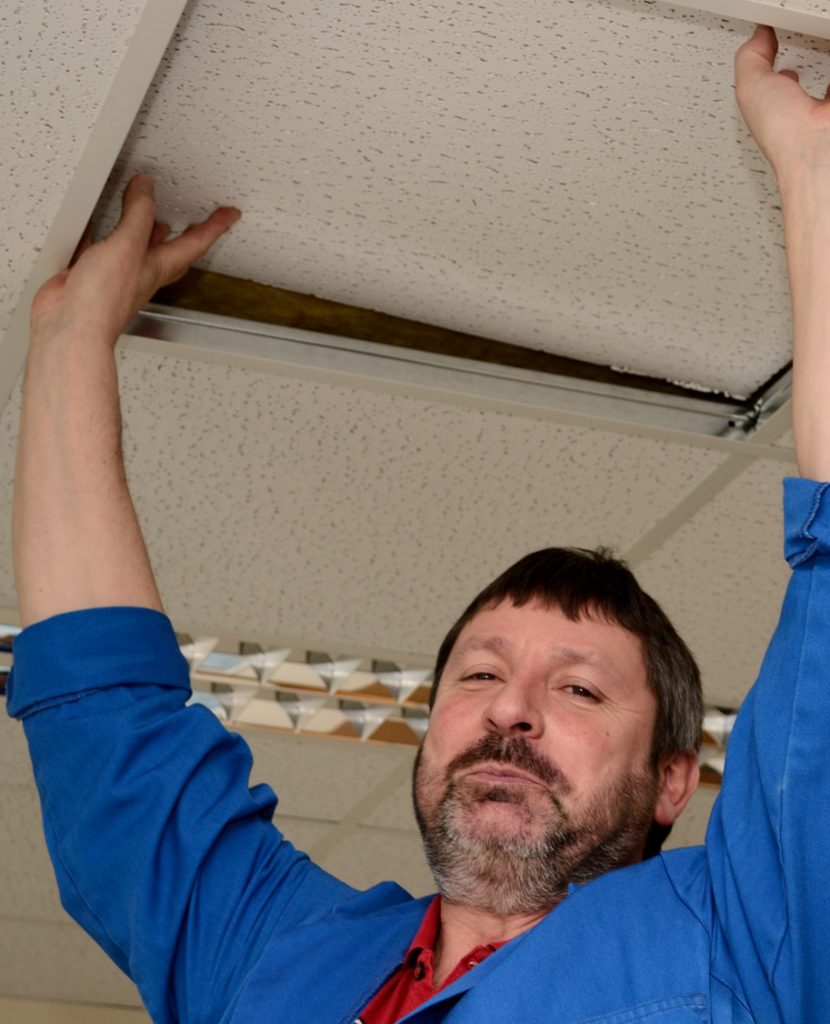Taking Care of Asbestos – The importance of asbestos awareness for school caretakers

For a school caretaker, the working day can be pretty hectic. Emergency repairs and long-standing maintenance schedules are a never ending cycle of commitments. The caretaker is required to zoom in like Superman to clean up the spilled, tighten the loose, take away the unwanted and clean the un-cleanable. Unfortunately, as the school’s intrepid caretaking hero rushes from place to place saving the day, he or she could be exposing themselves and others to a potentially fatal toxic substance. In any school built pre-2000 there is a fair chance that it will have been constructed using a range of Asbestos Containing Materials (ACMs), which have the potential to release deadly fibres.
Asbestos is now totally banned for use in the UK. For caretakers and managers in schools built pre-2000, awareness of asbestos has become a key issue, and the Control of Asbestos Regulations (CAR) were introduced to try to control exposure to standing installations. The current regulations (CAR 2012) were last updated when it was felt that the UK had not adopted the right level or response compared to the rest of Europe. It is a long, but quite clear, set of guidelines that details the correct response to ACMs and the need for effective management.
According to advice published by the Health and Safety Executive, management and monitoring are often the best response to asbestos in the workplace. They also list caretakers and other maintenance staff as being in the highest risk category for accidental exposure. It seems clear, then, that two things should ideally be in place to ensure safety. Firstly, the school should be meeting the requirements outlined in CAR 2012 when it comes to the duty to manage the danger, and secondly, ‘frontline’ workers such as caretakers and teachers should be aware of not only the danger from asbestos, but best practice when dealing with it.
Unfortunately, due to the way asbestos works, it is very difficult to assess the exact impact it has on health, however it is estimated that over 4000 people at least who are on the ‘at risk’ list (which includes maintenance staff) die every year from asbestos exposure. Asbestos fibres are extremely light, and when inhaled they stay in the system and can cause a range of diseases 10–50 years from exposure. This means it is often impossible to accurately pinpoint when exposure occurred and even if the exposure is responsible for the disease. What is certain is that as long as the ACM is undisturbed and the fibres intact, then the danger is minimal.
With asbestos being in around 75 to 86 per cent of schools, the only possible option is identification and management. Where there is a possible contamination situation, or in the case of the discovery of certain kinds of ACMs such as loose fill insulation, this means removal by specialist contractor. In other situations where the ACM is sound, in good order, and unlikely to be damaged, CAR 2012 requires a written survey, coupled with a monitoring and checking process to ensure it stays that way.
One baseline requirement is that, whatever the sort of school, there will be a designated person with a duty to manage, as this is a vital part of compliance with CAR 2012. If asbestos is present, or is suspected to be present in your school, then the duty to manage practitioner will have produced or will need to produce records of where there is asbestos and what condition it is in. Recognition of the potential for asbestos will therefore play a vital part in knowing how to deal with it safely, even if an outside contractor has done a survey.
